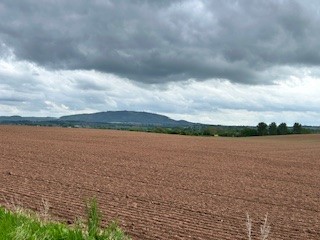When you walk across the fields, and woodlands of Sundorne, you’re seeing a living legacy – something that must be nurtured, enriched, and protected not just for today, but for many generations to come.
Here is how and why the estate is weaving regenerative farming, soil health, and biodiversity into its core.
What is Regenerative Farming and Why does it Matter?
Regenerative faming goes beyond sustainable. It aims to restore, enhance, and renew ecosystems.
The key elements include:
Building soil matter.
Minimising chemical inputs – pesticides and fertilisers.
Encouraging diverse crop rotations and cover crops.
Integrating livestock into arable rotations that benefits the soil and its structure.
Maintaining living roots in the soil throughout the year.
Managing water, hedgerows, woodlands to support wildlife and ecological resilience.
Soil is the foundation of agricultural productivity and ecological health. Healthy soil captures carbon and retains water, hosts beneficial organisms (microbes, insects, fungi), resists erosion, and produces our food.
Biodiversity above and below the ground improves resilience – with more ability to withstand droughts, pests, floods, and an ever-changing climate. For future generations, this means food, nature , climate, and the community are more secure.
How are Sundorne Castle Estate going to help?
By using modern, low input methods and technology such as GPS yield mapping, soil sampling, and airborne imagery to monitor crops and soil conditions.
Growing unusual crops – Borage, Poppies, Wildfarmed Wheat, and Quinoa alongside more tradtional staples like Wheat, Barley, and Potatoes. This diversity helps to enrich the soil structure.
Integration of livestock to graze and provide natural manuring. Sheep help by returning nutrients to soil, helping organic matter and structure. Our Easy-Care Sheep have been chosen for their low environmental footprint.
Enhancement and protection of habitat creation and preservation of ancient hedges that provide wildlife corridors, nesting sites, and to help with biodiversity. Field margins sown with wildflowers and grass to support pollinators and grooder insect life, which in turn helps pest control and the overall health of the ecosystem.

